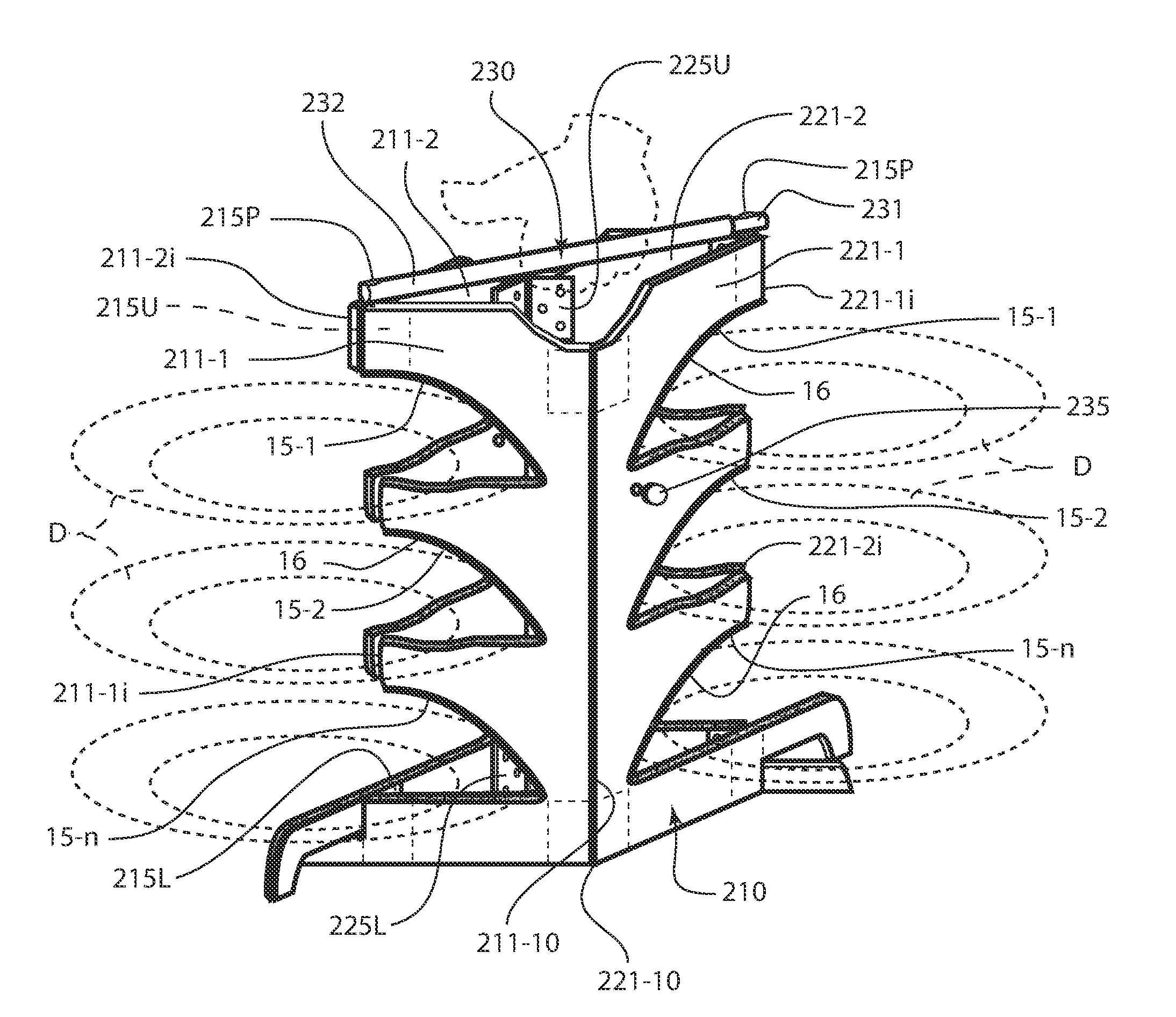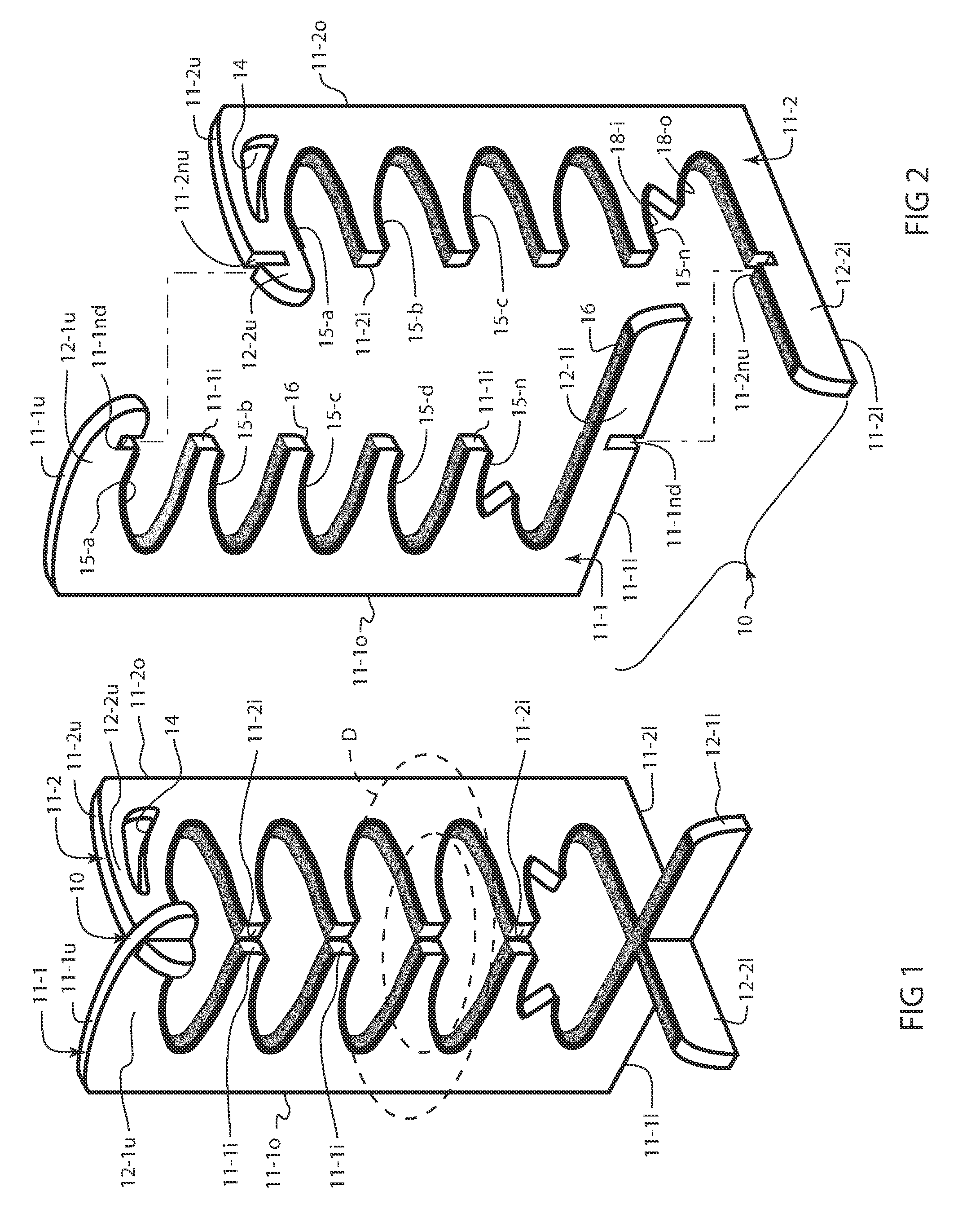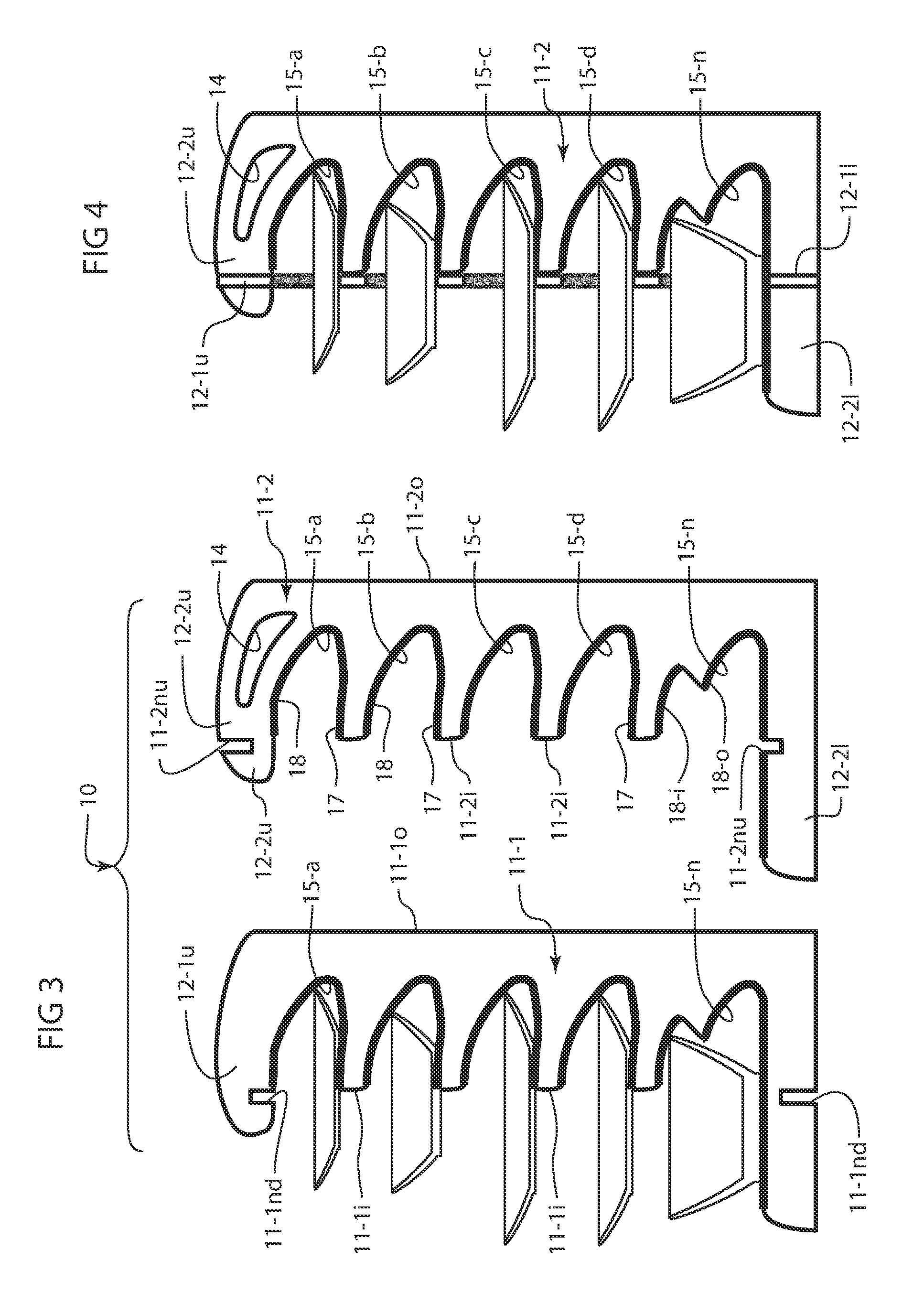Plate Stand
a plate stand and plate technology, applied in the field of dish plates, can solve the problems of difficult manipulation, complex structure, costly and often cumbersome structure, etc., and achieve the effect of convenient storage of structural combinations
- Summary
- Abstract
- Description
- Claims
- Application Information
AI Technical Summary
Benefits of technology
Problems solved by technology
Method used
Image
Examples
Embodiment Construction
[0071]As shown in FIGS. 1-6 the first implementation of the inventive dish carrier assembly, generally designated by the numeral 10, comprises a pair of substantially similar generally planar panels which by their substantial similarity shall be designated herein by the trailing numerals 1 and 2, where the respective panels 11-1 and 11-2 are each of an elongate, generally rectangular planform respectively defined by inner and outer longitudinal edges 11-1i and 11-1o and 11-2i and 11-2o. Transversely an upper and a lower edge 11-1u and 11-1l and 11-2u and 11-2l limit the planform of the respective panels 11-1 and 11-2, each of the upper and lower edges extending beyond the corresponding inner edges 11-1i and 11-2i to continue as the exterior edges of corresponding upper and a lower planar extensions 12-1u and 12-1l and 12-2u and 12-2l, with the lower extensions 12-1l and 12-2l on each panel being greater in width and spanning further from the corresponding inner edges 11-1i and 11-2i...
PUM
 Login to View More
Login to View More Abstract
Description
Claims
Application Information
 Login to View More
Login to View More - R&D
- Intellectual Property
- Life Sciences
- Materials
- Tech Scout
- Unparalleled Data Quality
- Higher Quality Content
- 60% Fewer Hallucinations
Browse by: Latest US Patents, China's latest patents, Technical Efficacy Thesaurus, Application Domain, Technology Topic, Popular Technical Reports.
© 2025 PatSnap. All rights reserved.Legal|Privacy policy|Modern Slavery Act Transparency Statement|Sitemap|About US| Contact US: help@patsnap.com



